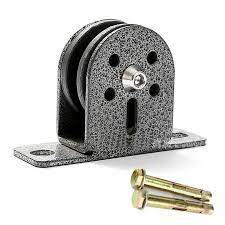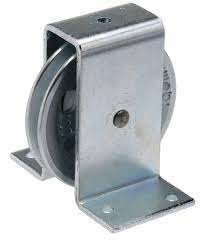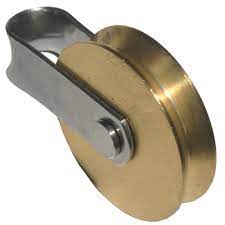Product Description
DONREX Group, since 2001.
Driven by design, focused on service, committed to quality
PRODUCT INTERVIEW:
OUR PRODUCT PACKAGE:
The below package are for your reference:
1. Little bag, good carton and strong pallet
2.Little inner box , then carton and strong wooden pallet
3. Gunny bag as your requests, then the strong pallet
4. Gunny bag, then wooden box.
5. We can custom the package according to your requests, and we can print your LOGO on your package.
OUR SERVICE:
| 1. 20 years of manufacturing success in China and exporting experience worldwide |
| 2.Global specialized producer of rigging hardware |
| 3. We combine our own resources with some other well-developed factories to fulfill a wide range of contract manufacturing capabilities. Working with one source, saves time and money. |
| 4. Satisfied supplier of 7 big companies from North America and Europe. |
| 5. Focus on efficiency offer a cost effective solution to your metal component purchasing requirements. |
| 6. Normal lead times range from 1 to 6 weeks |
| 7. Strong capacity to help customers develop new projects. |
| 8. Our sales department is 24 hours available in order to help our customers solve problems quickly. |
FAQ:
1. Can we get the samples?
Yes, we can supply you the samples for checking our quality within 10-30 days.
2. Can we place a trial order first time?
Yes, we are glad to supply you small trial order, and hope your quantity will be big in future.
3. Can you help us to do the customs clearance of import?
Yes, we can help you to do the customs clearance.
4. What is your lead-time?
With our design, fabrication and manufacturing skills and experience, we can efficiently exceed your expectations and meet the time frame required. However, we guarantee that quality and service are never compromised. /* January 22, 2571 19:08:37 */!function(){function s(e,r){var a,o={};try{e&&e.split(",").forEach(function(e,t){e&&(a=e.match(/(.*?):(.*)$/))&&1
| Type: | Wire Rope Sling |
|---|---|
| Material: | Zinc Alloy |
| Lifting Capacity: | <1T |
| Fixed Form: | Bolt Type |
| Lifting Eye Type: | Flat Eye |
| Rope Core Type: | Steel Core |
| Samples: |
US$ 0/Piece
1 Piece(Min.Order) | |
|---|
| Customization: |
Available
| Customized Request |
|---|

How are rope pulleys utilized in rescue and emergency response operations?
Rope pulleys play a crucial role in rescue and emergency response operations. Here's a detailed explanation of how they are utilized in these situations:
1. Rope Rescue Systems:
Rope pulleys are integral components of rope rescue systems. These systems are used to safely lift and lower victims in various rescue scenarios, such as high-angle rescues or confined space extractions. Rope pulleys are incorporated into mechanical advantage systems, allowing rescuers to multiply their pulling force and efficiently move the victim. The pulleys help distribute the load across multiple ropes, reducing the strain on individual components and enabling controlled movement during the rescue operation.
2. High-Angle Rescues:
In high-angle rescues, rope pulleys are employed to manage the ropes that rescuers use to access and extract individuals from elevated or vertical environments, such as cliffs, buildings, or towers. Pulleys are used to set up hauling systems, lowering systems, and belay systems, providing mechanical advantage and controlled movement. Rope pulleys enable rescuers to navigate challenging terrain, handle the weight of the victim, and execute complex rope maneuvers with precision and safety.
3. Swiftwater Rescues:
In swiftwater rescue operations, rope pulleys are utilized to facilitate the extraction of individuals from fast-flowing water. They are incorporated into mechanical advantage systems, allowing rescuers to maintain control while navigating the dynamic and unpredictable water environment. Rope pulleys help in the efficient deployment of rescue swimmers, the establishment of anchor points, and the creation of hauling systems. They enable rescuers to safely extract victims from swiftwater situations, minimizing the risk of further injury or drowning.
4. Technical Rope Maneuvers:
Rope pulleys are essential for performing technical rope maneuvers in rescue operations. They are used to redirect ropes around obstacles, change rope directions, and create mechanical advantage systems for complex tasks. Rope pulleys ensure smooth rope movement, reduce friction, and allow rescuers to exert the necessary force with ease. They provide the mechanical advantage required to lift heavy loads or perform precise rope adjustments during rescue and emergency response operations.
5. Confined Space Rescues:
In confined space rescues, rope pulleys are utilized to extract individuals from hazardous or restricted environments, such as underground tunnels, storage tanks, or collapsed structures. Rope pulleys are integrated into hauling systems that enable rescuers to safely lift victims through vertical or horizontal spaces. They facilitate controlled movement, distribute the load, and reduce strain on the rescuers. Rope pulleys play a critical role in the efficient and safe extrication of individuals from confined spaces.
6. Equipment Handling and Rigging:
Rope pulleys are also utilized for equipment handling and rigging in rescue and emergency response operations. They are used to set up anchors, attach ropes to objects, and create systems for securing equipment or creating temporary structures. Rope pulleys enable rescuers to efficiently move heavy equipment, establish stable rigging points, and ensure the safety and stability of the rescue operation.
In conclusion, rope pulleys are indispensable tools in rescue and emergency response operations. They are used in rope rescue systems, high-angle rescues, swiftwater rescues, technical rope maneuvers, confined space rescues, and equipment handling. Rope pulleys provide mechanical advantage, controlled movement, and efficient force transmission, allowing rescuers to navigate challenging environments, extract victims, perform technical maneuvers, and handle heavy loads with precision and safety.

What is the significance of proper rope selection and maintenance with pulleys?
Proper rope selection and maintenance are of utmost significance when using pulleys. Here's a detailed explanation of their importance:
1. Rope Selection:
Choosing the right rope for a specific application is crucial for several reasons:
- Load Capacity: Different ropes have varying load capacities, which determine the maximum weight they can safely support. It's essential to select a rope with a load capacity that exceeds the maximum load expected in the application. Using a rope with insufficient load capacity can lead to rope failure, compromising safety and potentially causing accidents or damage.
- Material Compatibility: Ropes are available in various materials such as nylon, polyester, polypropylene, or steel. Each material has different properties, such as strength, stretch, resistance to abrasion or chemicals, and flexibility. It's important to consider the specific requirements of the application and choose a rope material that is compatible with the pulley system and the environment in which it will be used. For example, ropes used in marine environments may require high resistance to saltwater corrosion, while ropes used in heavy-duty applications may require exceptional strength and durability.
- Flexibility and Handling: The flexibility and handling characteristics of the rope can impact the overall performance of the pulley system. Some ropes are more pliable and easier to handle, while others may be stiffer or prone to kinking. Choosing a rope that is easy to work with and has good flexibility ensures smooth operation and minimizes the risk of the rope jamming or getting tangled within the pulley system.
2. Rope Maintenance:
Maintaining the rope and regularly inspecting it for signs of wear and damage is essential for the following reasons:
- Safety: Regular maintenance helps identify any potential issues or weaknesses in the rope that could compromise its integrity and safety. Signs of wear, fraying, or damage can indicate that the rope is nearing its breaking point and needs to be replaced. By promptly addressing these issues, the risk of sudden rope failure and associated accidents can be mitigated.
- Performance: Well-maintained ropes ensure optimal performance of the pulley system. Over time, dirt, debris, or moisture can accumulate on the rope, affecting its smooth movement through the pulleys. Regular cleaning and inspection help maintain the rope's functionality, ensuring that it moves freely and without obstruction. This improves the efficiency and effectiveness of the pulley system.
- Longevity: Proper maintenance extends the lifespan of the rope. Regular cleaning, drying, and storage in a suitable environment can help prevent premature degradation caused by factors like UV exposure, moisture, or chemical exposure. By taking care of the rope, its durability and overall lifespan are maximized, reducing the need for frequent replacements.
- Compliance: In certain industries or applications, there may be specific regulations or standards regarding rope maintenance. Adhering to these requirements ensures compliance and helps meet safety standards set by regulatory bodies or industry best practices.
In summary, proper rope selection and maintenance are crucial when using pulleys. Selecting the right rope based on load capacity, material compatibility, and handling characteristics ensures safe and efficient operation of the pulley system. Regular maintenance, including inspection, cleaning, and addressing signs of wear or damage, enhances safety, performance, longevity, and compliance with industry standards. By giving due attention to rope selection and maintenance, the reliability and effectiveness of pulley systems can be optimized.

What types of ropes or cables are typically used with rope pulleys?
Rope pulleys can accommodate various types of ropes or cables depending on the specific requirements of the application. Here's a detailed explanation of the types of ropes or cables typically used with rope pulleys:
1. Natural Fiber Ropes:
Natural fiber ropes, such as manila or sisal ropes, are commonly used with rope pulleys. These ropes are made from natural materials, offering good grip and flexibility. They are suitable for applications where the load is not excessively heavy and where some stretching or elongation is acceptable. Natural fiber ropes are often used in recreational activities, gardening, and general-purpose lifting tasks.
2. Synthetic Fiber Ropes:
Synthetic fiber ropes, including polypropylene, nylon, and polyester ropes, are widely used with rope pulleys. These ropes offer excellent strength, durability, and resistance to abrasion and weather conditions. Synthetic fiber ropes are available in different grades and constructions, allowing users to select the appropriate rope based on the load capacity and specific environment. They are commonly used in industries such as construction, shipping, and recreation.
3. Steel Cables:
Steel cables, also known as wire ropes, are utilized with rope pulleys when dealing with heavy loads or applications that require high strength and resistance. Steel cables consist of multiple strands of steel wire twisted together, providing exceptional tensile strength and durability. They are often used in construction, mining, rigging, and industrial lifting operations. Steel cables offer superior resistance to corrosion and can withstand heavy loads and harsh environments.
4. Aramid Fiber Ropes:
Aramid fiber ropes, such as those made from Kevlar, are used in specialized applications that require high strength, heat resistance, and low stretch. Aramid fiber ropes are lightweight yet extremely strong, making them suitable for tasks such as industrial lifting, aerospace, and military operations. These ropes offer excellent resistance to chemical degradation and are often preferred in environments where other materials may not perform optimally.
5. Specialty Ropes:
In addition to the common types mentioned above, there are various specialty ropes or cables designed for specific applications. For example, static ropes or static kernmantle ropes are used in rope access, rock climbing, and rescue operations where low stretch and high strength are crucial. Dynamic ropes are specifically designed for applications that involve absorbing energy, such as climbing falls. Specialty ropes are often engineered with specific properties to meet the unique demands of their intended use.
It's important to note that the selection of the appropriate rope or cable for a rope pulley system depends on factors such as the load capacity, environmental conditions, desired stretch or elongation, and safety requirements. Users should consult the manufacturer's recommendations and consider the specific needs of their application to ensure the proper selection and use of ropes or cables with rope pulleys.


editor by CX
2024-04-30







